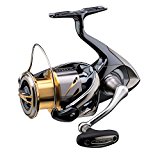European Bass Reproduction Facts and Information
juvenile European bass stay close inshore until they are around 14 inches/35.5 cm in length.
When the inshore waters cool in late October, the European Bass migrate out to sea to spawn in groups. They return someone time between February and June as the waters begin to warm, requiring a minimum temperature of 47°F/8°C degrees.
They spawn in midwater and take between four and nine days to hatch. The larvae then drift inshore over the next two months and end up in creeks over the next several months. This is where they spend the next four years maturing before heading back to the sea. Spawning takes place in the spring near the British Isles, and earlier in its southern range. The juvenile European Bass feed on invertebrates, taking increasingly more fish with age.
The juvenile European bass stay close inshore until they are around 14 inches/35.5 cm in length, which is about four years old. In their fifth year, they move into wider coastal areas for a year or so, as schooling European bass before becoming fully mature at the beginning of year six, almost half way through their life.
Farming
European bass commercial farming has become a big business as the technique for farming European bass is simple and cost effective.
The female bass reach sexual maturity at three years of age and have no trouble laying eggs in captivity. In the natural environment, sea bass mate once a year.
However, scientists have found that by altering the water temperature, they can get the females to lay eggs multiple times a year. Each time they lay eggs, one thousand eggs are released.
The figure below shows the artificial reproduction farming cycle. You can see how different it is to the natural cycle above.


